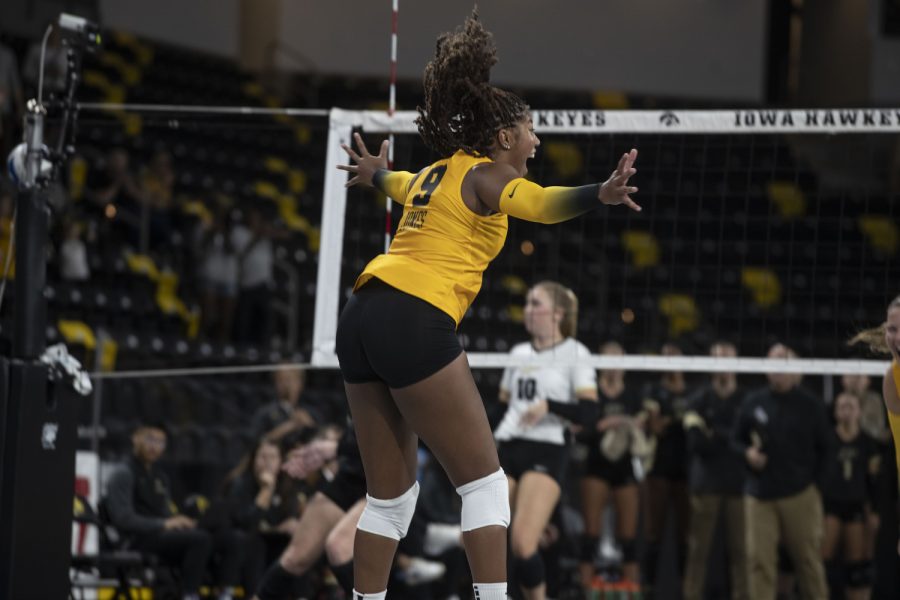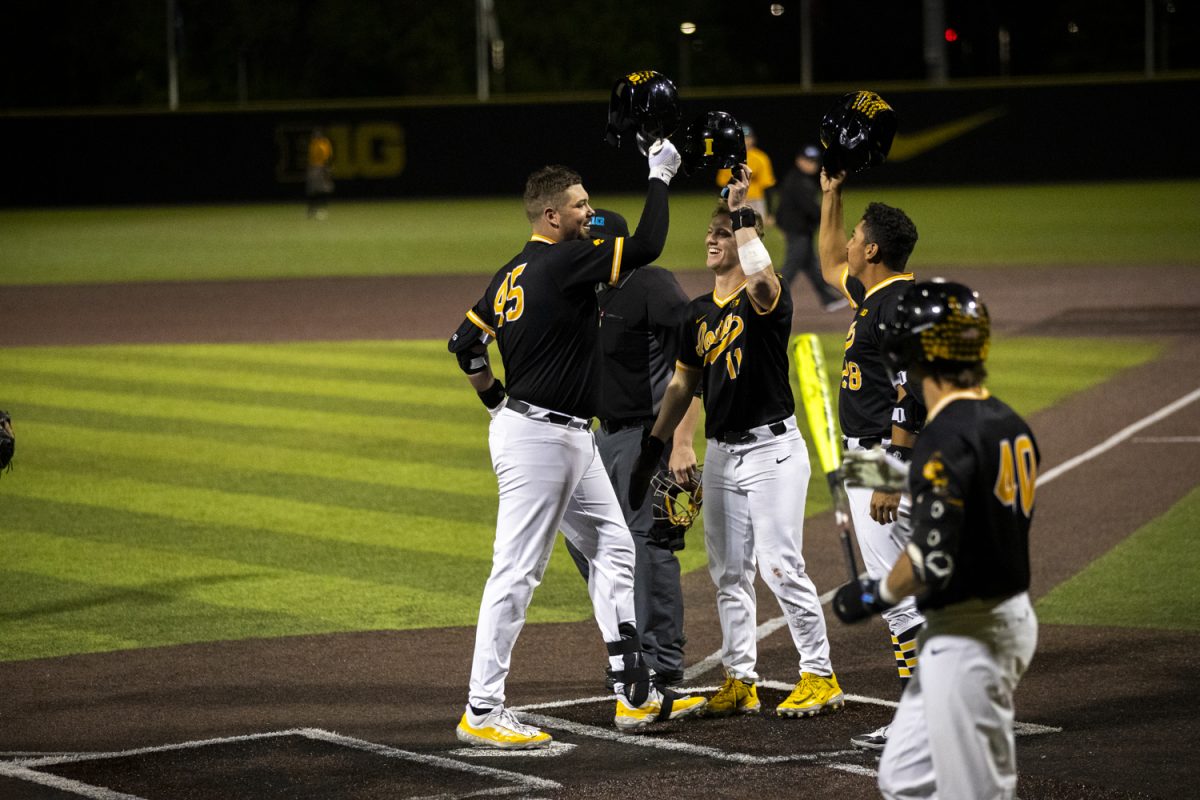Tom Davis didn’t know what to expect.
The then-48-year-old basketball coach came to Iowa in 1986 from Stanford, inheriting a bevy of talent; proof was the Hawkeyes’ preseason No. 10 ranking.
But only time would tell how his new roster would adapt to the changes that accompany a new coaching staff.
The Big Ten was strong at the time, having sent six teams to the NCAA Tournament the previous season.
Even though Iowa was one of those teams, Davis wasn’t sure if that success could be repeated with his new system.
"I had no idea," he said when asked what his expectations were at the beginning of that season.
Some of the players, including guard Kevin Gamble, felt the same way. Gamble had transferred to Iowa a season earlier from Lincoln College in Illinois — and having spent his first year at Iowa with George Raveling as head coach during the 1985-86 season, Davis’ arrival meant he was in his third system in as many years.
"There were no expectations, because everything was new," Gamble said. "The unknown factor for us was important, because we didn’t know how good we were. We just went out and played hard every game."
What ensued was a "very pleasant surprise," as Davis put it, and it remains one of the best seasons in school history.
Finding the right pieces
Davis knew he had talent, but he wasn’t sure how his new players would mesh with a scheme that involved a fast-break offense and full-court-pressure defense. Such a tempo requires depth, something Iowa developed very quickly.
Several of the players who eventually became the stars of Iowa’s magical run to the Elite Eight hadn’t seen much playing time the previous season under Raveling. Ed Horton (a freshman that season) and Brad Lohaus had averaged 12.7 minutes per game, and B.J. Armstrong (also a freshman) and Kevin Gamble saw approximately eight minutes of action per contest.
That all changed under Davis.
All four players averaged more than 20 minutes per game in Davis’ first season, and Gamble made one of the biggest improvements of anyone under the new coaching staff. His playing time tripled in his final year at Iowa, averaging almost 25 minutes per game. Davis moved Gamble from power forward, which he played under Raveling, to guard, which he had played before coming to Iowa.
"The challenge as a first-year coach, when you have some players returning, is to figure out who fits and what they fit doing," Davis said. "You have to make sure you can get the players to take advantage of their skills."
Davis recognized Gamble’s talents not in a game or practice but in what the coach called a "community scrimmage." In those days, Iowa made between three and five October stops around the state to hold a meet-and-greet with fans before a scrimmage.
Davis recalled one such stop in Waterloo in which the team played at the National Cattle Congress. Gamble played with the second unit but managed to score "40-some" points against the first team, Davis said.
"Well, as you can imagine, being the smart coach that I was, he was on the first team after that," Davis said and laughed.
Creating family
Iowa traveled to China for 10 days in August before the tip-off of the 1986-87 campaign. The Hawkeyes played against Chinese and Korean national teams, and those games — combined with the 10 extra days the NCAA allowed Iowa to practice in preparation for the trip — gave the players and new coaching staff some much-needed time together.
Davis recalled one game the team played in Shanghai at a communist military base; it was in these "extreme conditions," he said, that created the focus level necessary to move forward.
But players such as Roy Marble remember the trip for much more than the on-the-court experiences.
"When we were able to go and leave the country, I think that was monumental for us because we got to know each other real, real well," said Marble, who was a sophomore on that year’s squad. "By the time we came back, we were pretty much a family."
Marble credited much of the team’s early success to the environment Davis fostered early in his tenure as head coach. He said Davis often had the entire team get ice cream, go on walks, or perform other small activities as a group. He took those activities for granted at the time, he said, but now can’t deny that they were instrumental in building chemistry.
"There weren’t too many places we didn’t all hang out together," Marble said. "We didn’t have what I call CoralVegas — we didn’t have Coralville. We spent a lot of time as a unit, and I think that’s a tribute to Coach Davis and his ability to find things for us to do as a team."
Bloody noses and missing teeth
Practice makes perfect, as the Hawkeyes learned in their first 18 games.
"Our practices were tougher than games," Marble said. "[They] were cut short once the season started because of the chance of being injured. We went at each other a lot harder than we had to in the games."
Marble retraced the rivalries in practice — among him and Michael Morgan, Armstrong and Michael Reaves, Gamble, and Bill (CCMB) Jones, to name a few — and how the teammates pushed each other to the best start in school history, 18-0.
"We were competing for playing time, and then once that was established, it wasn’t like you could rest on your throne," Marble said. "Everyone had his little rivalries for you to be pushed and made better. You had to earn it. Even the starters, you had to earn it. [The reserves] didn’t give you anything."
From Alaska to No.1
Iowa opened the season by playing in the Great Alaska Shootout, in Anchorage. The field was a testing ground for the Hawkeyes, and all three of their opponents — Alaska-Anchorage, North Carolina State, and Northeastern — wound up in the NCAA Tournament at season’s end.
It was a test Iowa passed, defeating Northeastern by 23 points in the championship game. Marble, who was named the Most Outstanding Player of the tournament, said those three early games were a sign of things to come.
"The Great Alaska Shootout was when I really knew, ‘Oh boy, man, this is going to be fun,’ " he said. "I think at that time, all of us realized Coach Davis’ way of thinking was going to work. It was obvious we were on to something special."
The wins started piling up for Iowa after leaving Alaska. The Hawkeyes traveled west for another tournament in late December, the Anteater Classic in California. Iowa defeated Portland, 85-63, and then host Irvine, 105-103, in the title game.
Conference play began with three convincing victories — Davis’ squad beat Northwestern, Wisconsin, and Minnesota by an average of 24 points.
Gamble said the wins added up so fast that "not until we had 11, 12, 13 wins did we realize we could be a good team."
But Iowa wasn’t just a good team. This team was one for the ages.
Now ranked No. 2 nationally, the Hawkeyes reeled off three huge wins against top-10 opponents — at Illinois, at Purdue, and at home against Indiana — to start conference play 6-0. More importantly, the two road victories bumped the team to No. 1 in the country for the first time in the history of the program. By late January, Iowa had won a school-record 18-consecutive games.
The Legacy
Iowa won nine of its last 13 games to close out the regular season, and earned a two-seed in the NCAA Tournament. The Hawkeyes advanced through the first three rounds to the Elite Eight, thanks in part to some dramatics from Gamble. Trailing Oklahoma 91-90 in the regional quarterfinals, Gamble drained a straightaway 3-pointer with one second on the clock to defeat the Sooners in overtime.
"It’s something you dream of as a kid," Gamble said. "It’s something you practice every day — you count down the clock, ‘Five, four, three, two, one,’ and you shoot it … It was a lot of fun."
"I remember jumping so high my butt was above his head," Marble said of the celebration following Gamble’s game winner.
That was Iowa’s final bit of glory, though. The Hawkeyes were defeated by UNLV in the next round, 84-81.
Iowa finished that unforgettable season 30-5, another school record. Marble and Gamble were named team co-MVPs. The pair were two of eight members from the 1986-87 team who went on to play in the NBA, along with Lohaus, Armstrong, Horton, Bill Jones, Les Jespen, and Jeff Moe. Marble went on to become Iowa’s all-time leading scorer with 2,116 points and also, until Ryan Bowen, owned the Hawkeye record for career steals. Davis coached the Hawkeyes for another 12 seasons and become the Hawkeye hoops coach with the most victories, 269.
The 1986-87 squad remains the only team in school history to reach the No. 1 ranking.
"We were just living the dream. We were just playing," Marble said. "But we understood that when we were finished, we wanted to be winning."






